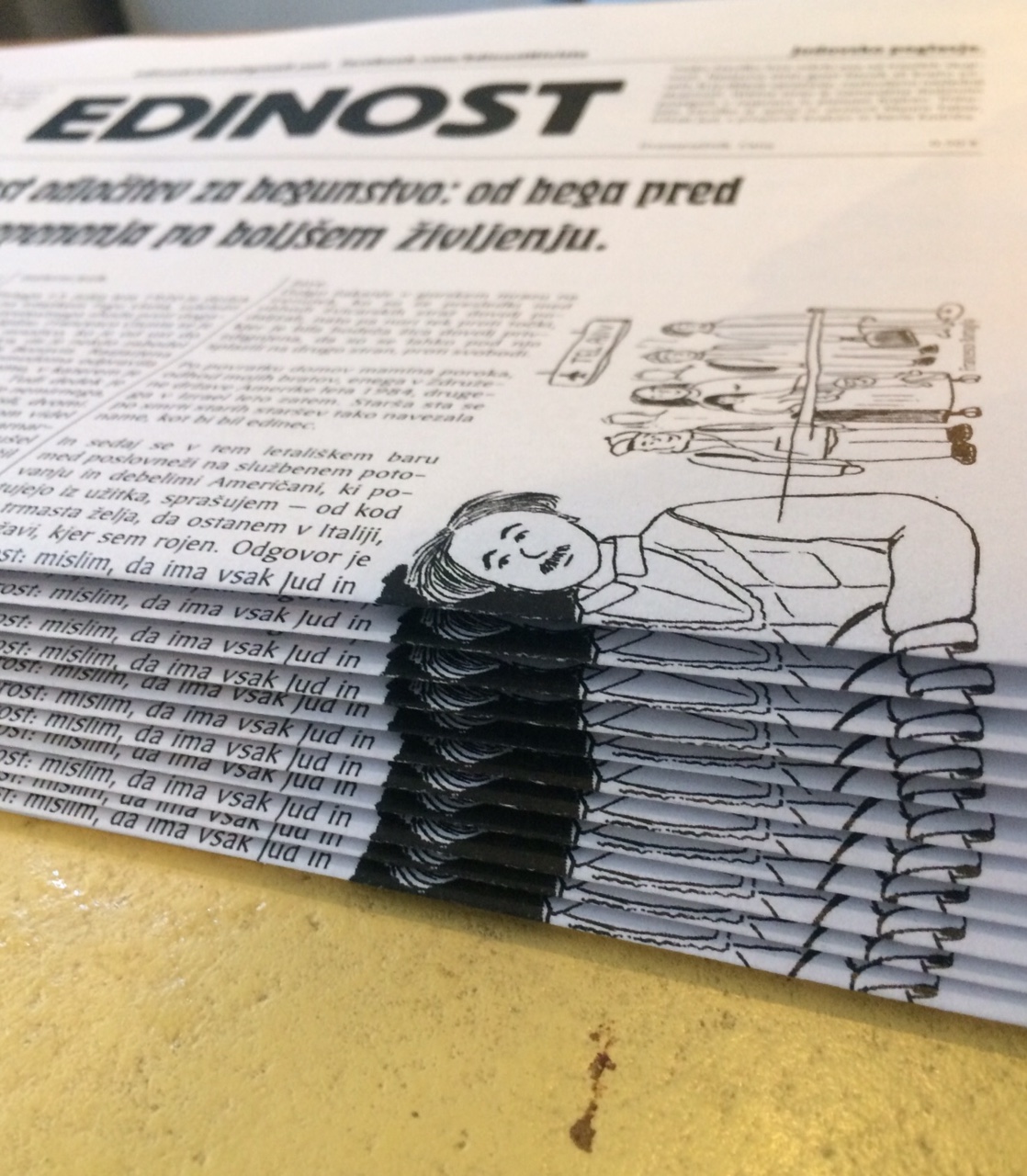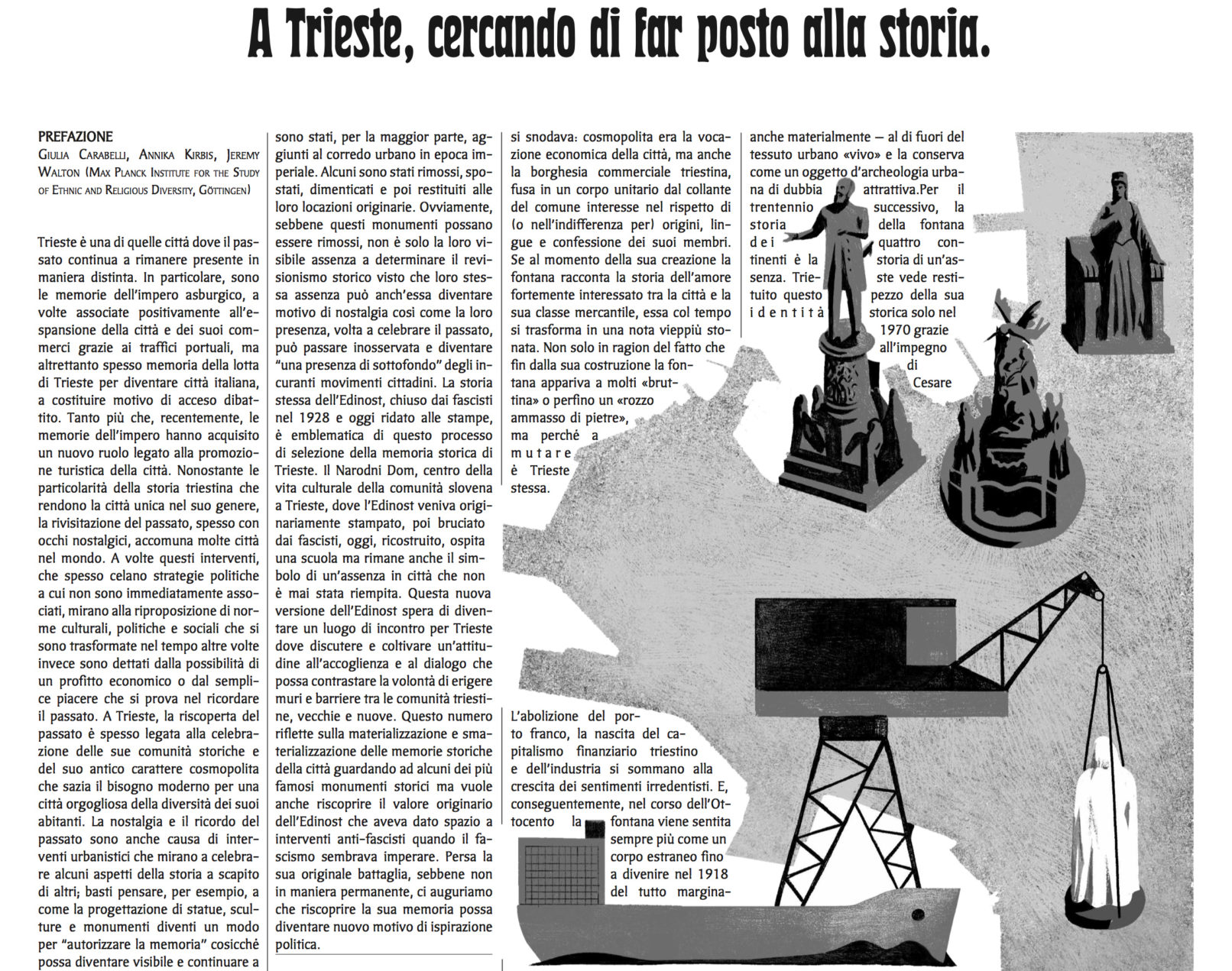Edinost is a platform that stages different voices and elements, asking the audience to stand between them. A personal investigation, where the written word becomes the final result of a process of dialogue, relationships and composition. Reopened as a multicultural space of encounter between the different communities of the city of Trieste (IT), investigating borders, fascisms, politics of memory and the role of the arts in the re-discussion of unresolved conflicts. It became in 2018 the European Edinost, an online and printed free journal: a laboratory where artists, academics and citizens can collectively create a framework for a new antifascism. Reflecting on European identity and perceiving countries as spaces and geographies, more than borders and territories. The last issues focused on the concepts of transient identity and homelessness felt by migrants who have moved to more than one country to work.
HISTORY
Trieste is a city in the north of Italy, situated in the border with the Balkan countries. It hosts six main communities: Croatians, Greeks, Italians, Jews, Serbians and Slovenians. In January 2016 a curator of its modern art museum -Revoltella- asked me to “solve” a problem, the absence of real dialogue between these communities. Digging on history I discovered the story of the Hotel Balkan/Narodni Dom -the Slovenian house of culture in Trieste- and of a newspaper printed inside, the Edinost. I found in the consequences of the Narodni Dom arson -the rise of the so called Border Fascism- a key point on the issue to solve, and some similarities with the borders’ problems we are witnessing in recent times. The Edinost gave voice to the first antifascist movement in Europe and so the fascists closed it in 1928. Edinost means “Unity”, originally the unity of all the Slovenians living in Trieste. I decided instead to re-open it now, with the help of the local publish house Asterios Editore, as unity of all the people living in the city, as a public space of dialogue between the different communities. Published twice a month for six numbers, every one written by a different community, the new Edinost contains on the front page a chapter of a tale, written in the writer mothertongue and Italian, that ends with a question to which the next writer has to reply. The back instead hosts the readers letters, the memories of the city “minor” communities, and art writers, critics and theatre directors invited to reflect on topics connected to the project. The newspaper keeps the same format, fonts and layouts of the original one. I’m directing the collective writing giving to each number a topic and title, and associating a different community to each one.
Citizens contributing as writers are: the Slovenian poet Marko Kravos, the Serbian history researcher Bojan Mitrovic, the Jewish council member Mauro Tabor, the Croatian professor Vesna Piasevoli, the Italian journalist Pierluigi Sabatti and the Greek painter Antonio Sofianopulo.
The newspaper hosted also the interventions of the Slovenian theatre director Marko Sosic, the curator Pietro Gagliano, the art writer Emanuela De Cecco, the art historian Teresa Macrì, the EU parliament interpreter Ravel Kodric, the fictional character Anastasios Ritsos, the poet Charles Simic, the professor of Cultural Policy Jeleva Todorivic, the Max Planck Institute for the study of ethnic and Religious diversity’s professors and researchers in an issue dedicated to nostalgia, materialisation and de-materialisation of memory in Trieste(Giulia Carabelli, Annika Kirbis, Jeremy Walton, Maura Hametz, Andrea Griffante, Glenda Sluga, Data Licen and Martin Hlavacek), and the students of Croatian Language of the University of Trieste (IUSLIT).









